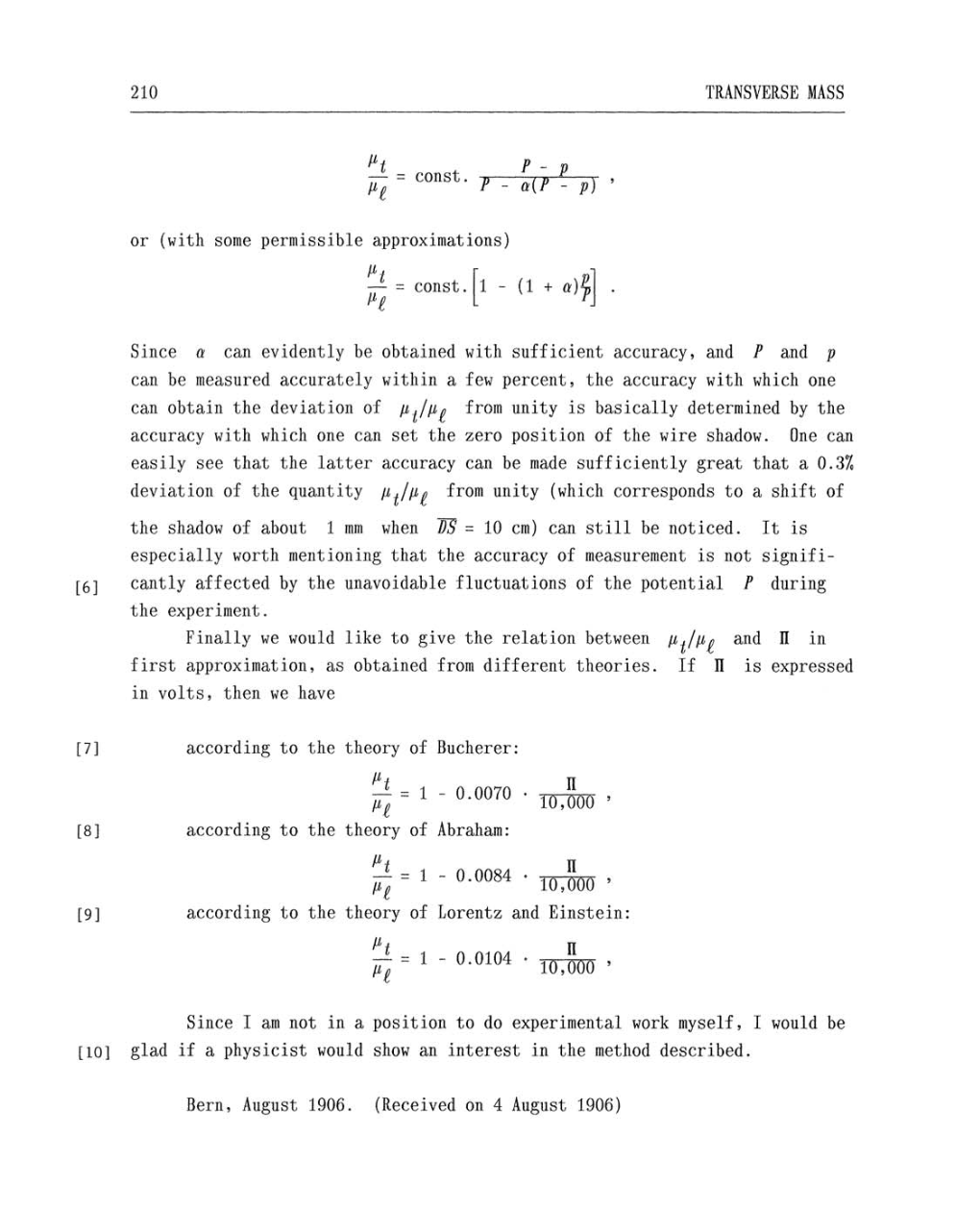210
TRANSVERSE MASS
ßt
+
P
-
p
-
=
const.
7j
/
p *
\
fig
P
-
a[P
-
p),
or
(with
some
permissible
approximations)
t
1
-
(1 + a)J
=
const.
Since
a
can
evidently
be
obtained with sufficient
accuracy, and P
and
p
can
be
measured accurately
within
a
few
percent,
the
accuracy
with
which
one
can
obtain the deviation
of
ut/ul
from unity
is
basically
determined
by
the
accuracy
with
which
one can
set
the
zero
position
of the wire
shadow.
One
can
easily
see
that the latter
accuracy
can
be made
sufficiently
great
that
a
0.3%
deviation
of
the
quantity
ut/ul
from unity
(which
corresponds to
a
shift of
the
shadow
of
about
1 mm
when
DS
=
10
cm) can
still
be
noticed. It is
especially worth
mentioning
that the
accuracy
of
measurement
is
not
signifi-
cantly
affected
by
the unavoidable fluctuations
of the potential
P during
the
experiment.
Finally
we
would
like
to give
the relation
between
ut/ul
and
II
in
first
approximation,
as
obtained
from
different
theories.
If
II
is
expressed
in volts, then
we
have
[7]
according to
the
theory
of
Bucherer:
ut/ul
=
1
- 0.0070
.
II/10,000
,
[8]
according
to
the
theory
of
Abraham:
ut/ul
=1
-
0.0084
.
II/10,000
,
[9]
according
to
the
theory
of Lorentz
and
Einstein:
ut=1-
0.0104.
II/10.000
,
Since
I
am
not
in
a
position
to do experimental work myself,
I
would be
[10]
glad
if
a
physicist
would
show
an
interest
in
the
method
described.
Bern,
August
1906.
(Received
on
4
August 1906)
[6]
